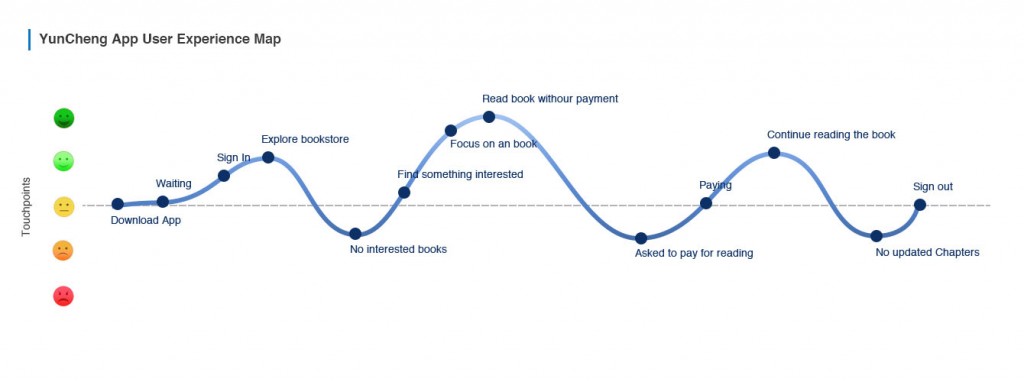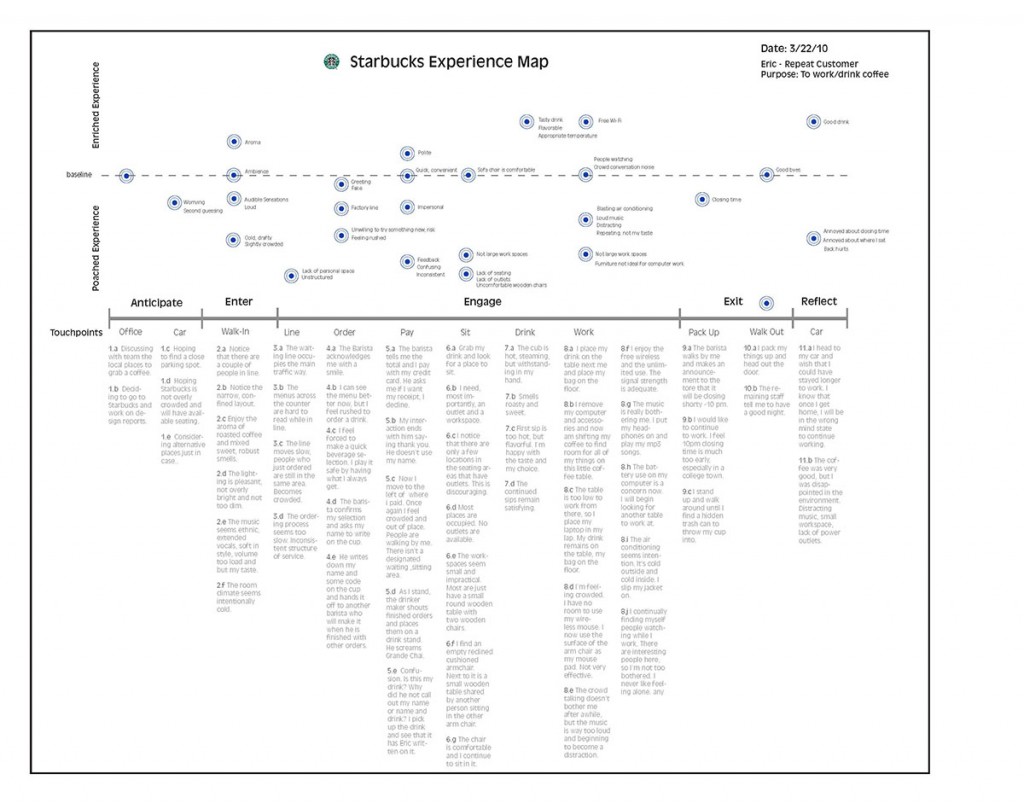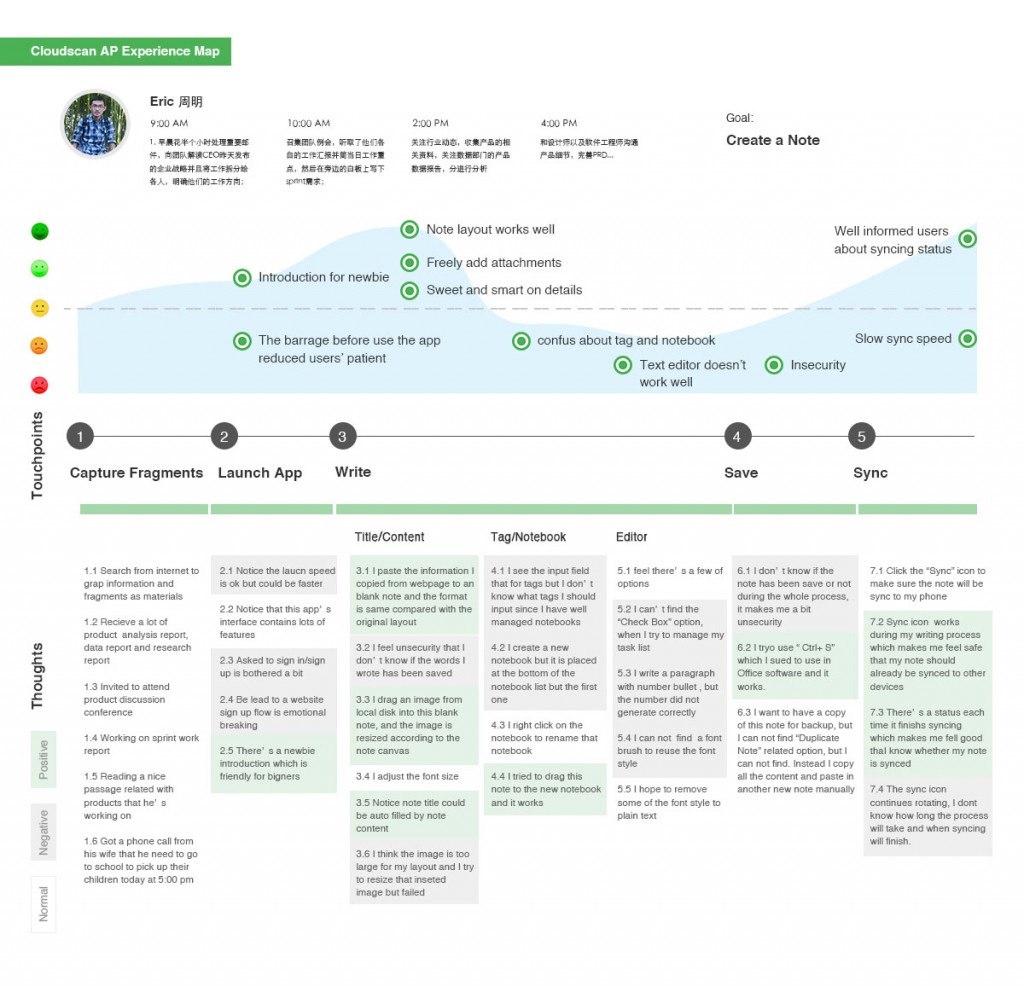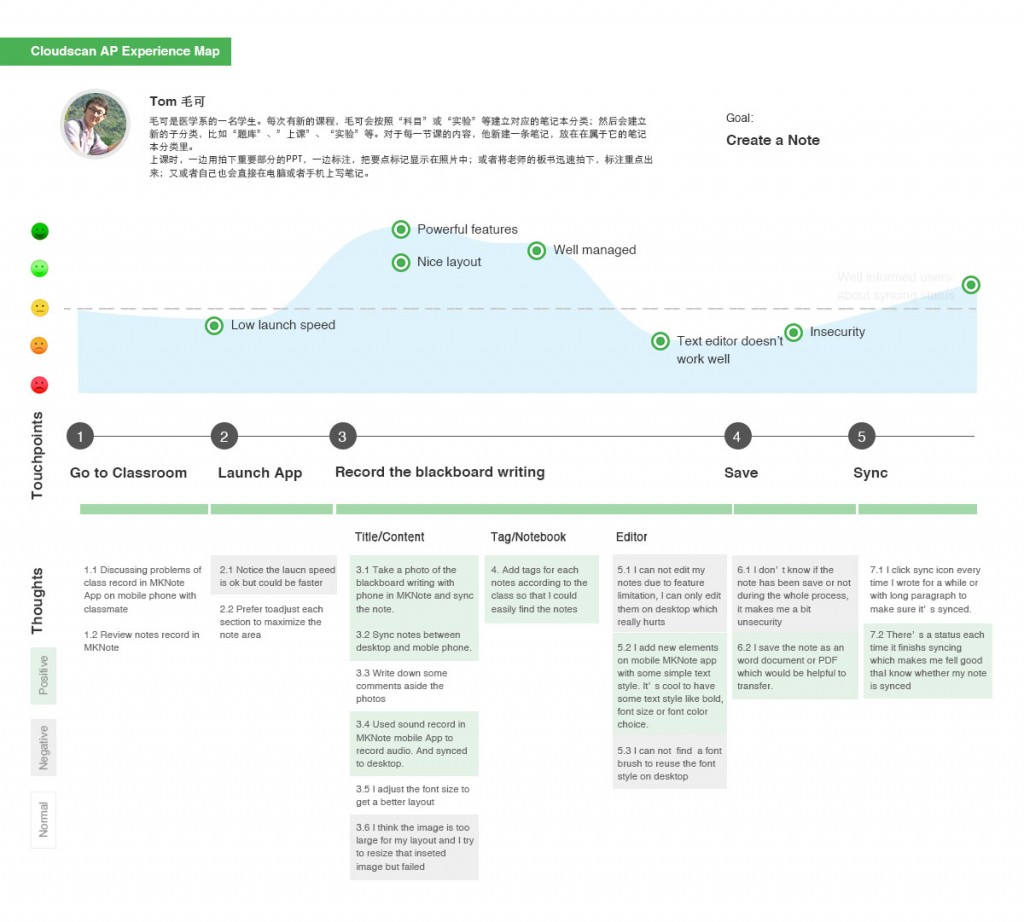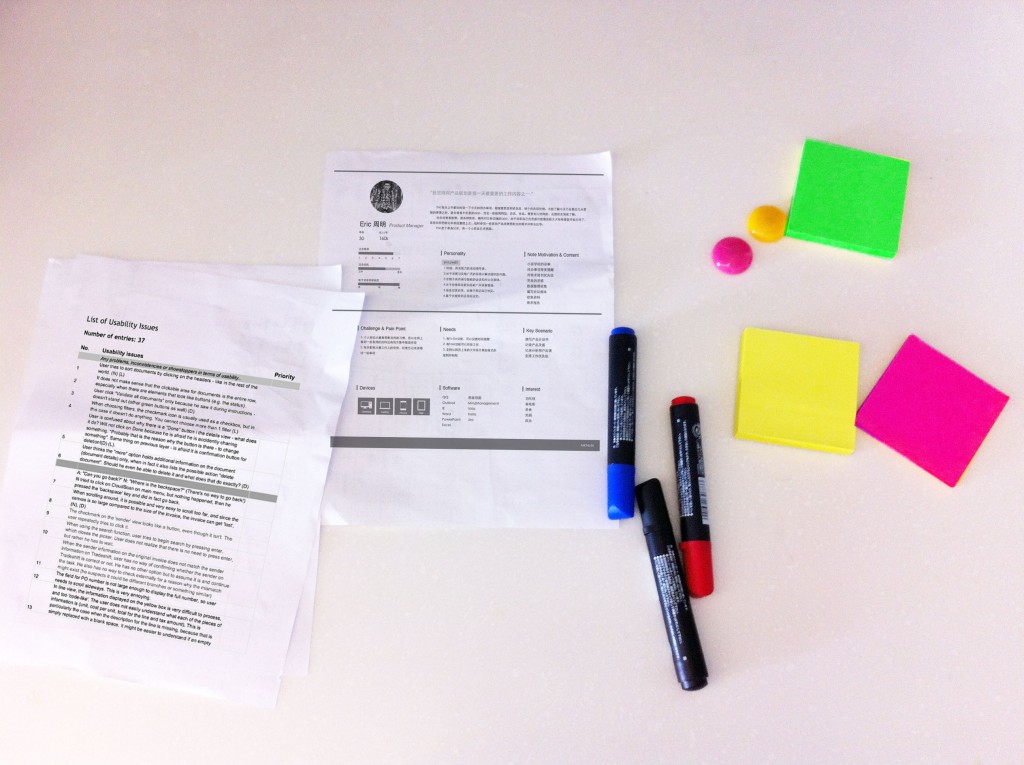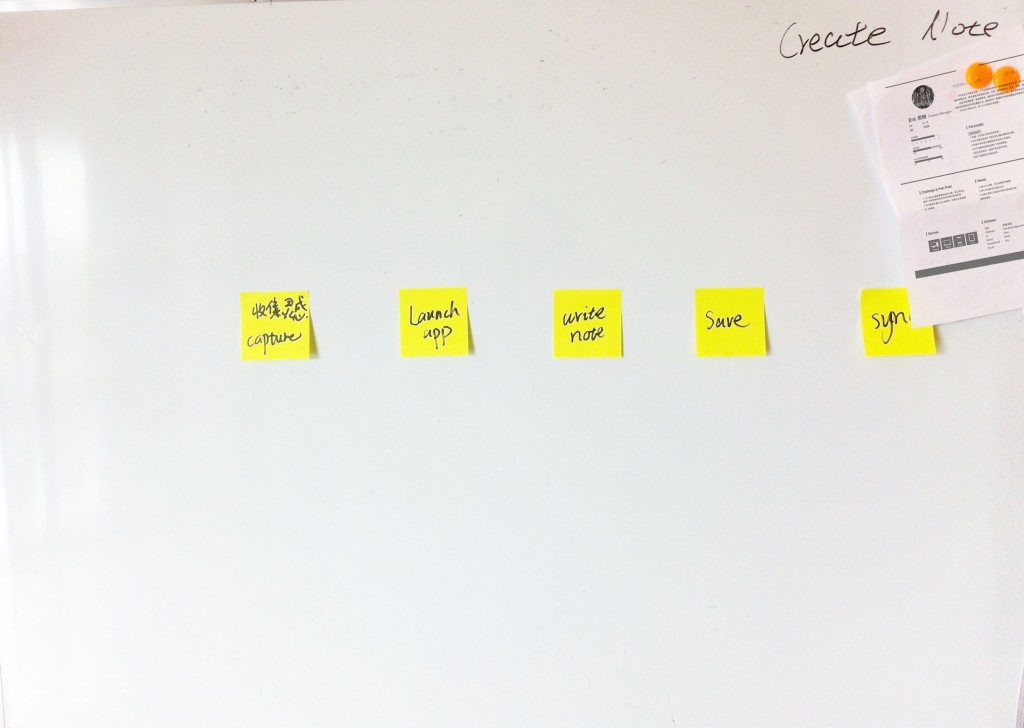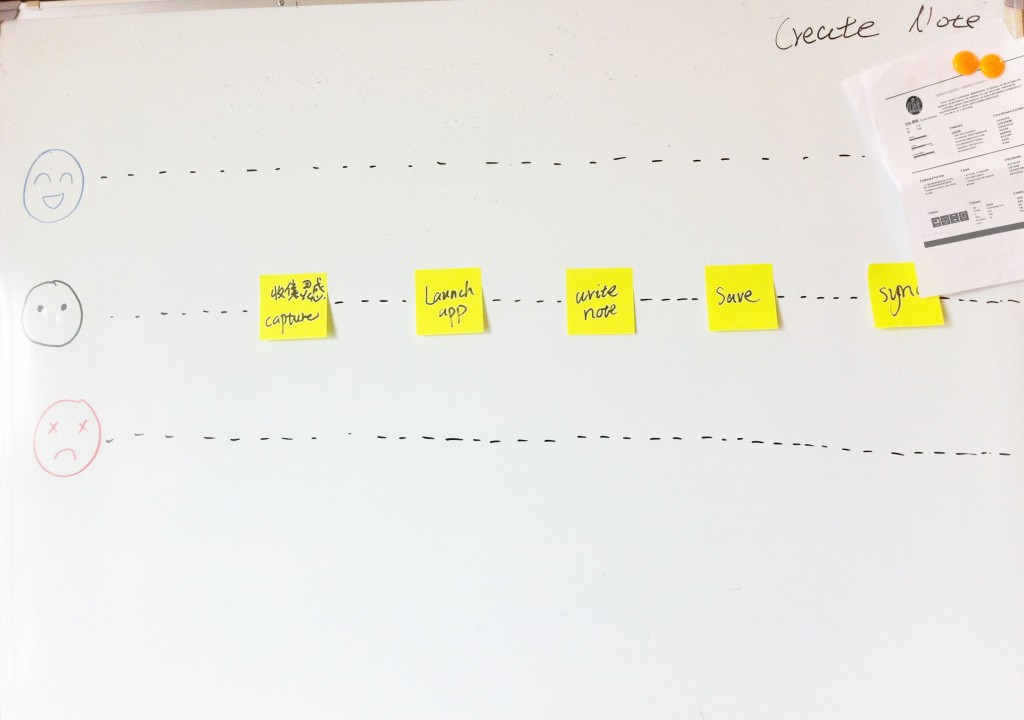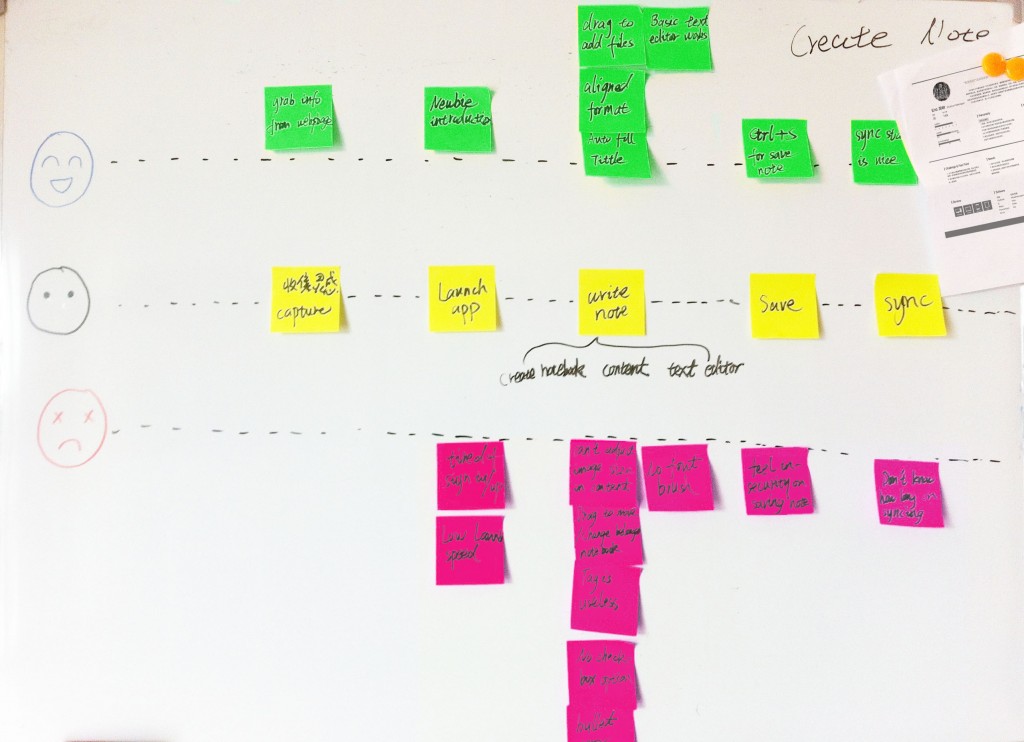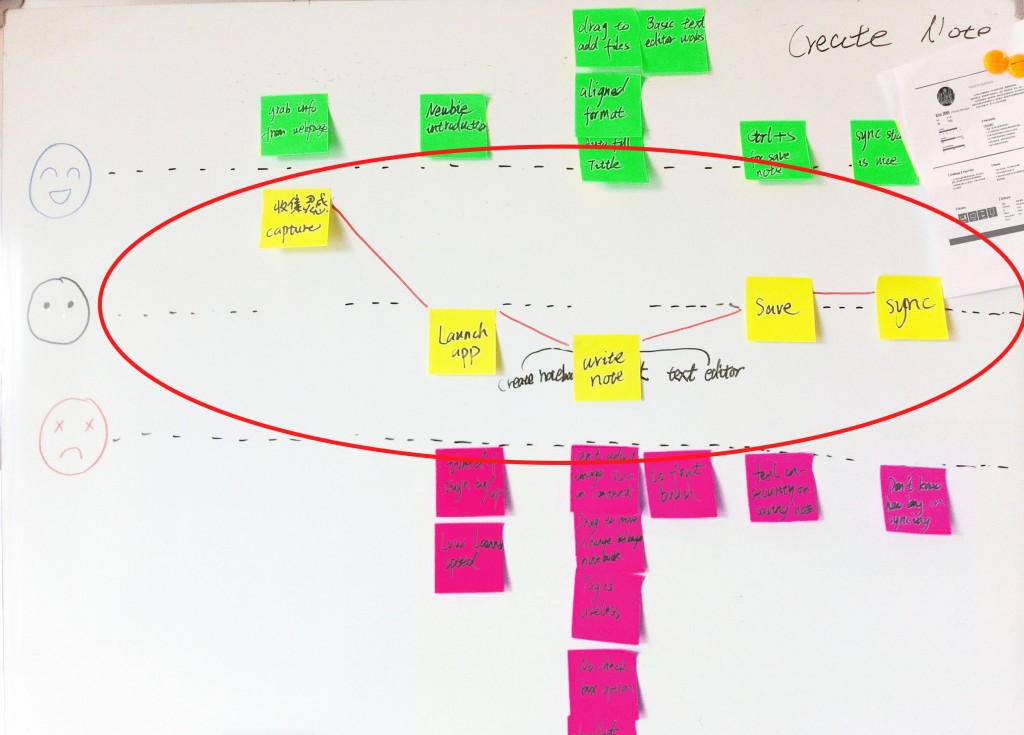
Emotion Design – Use “Experience Map” to Discovery Design Opportunity
Experience Maps or called User Journey Maps is an important design tool to understand our product interactions from users’ point of view. One experience map is basically a visual representation that illustrate users’ flow their needs, wants, expectations and the overall experience for a particular goal.
It may be questioned on the value for design. Here we look at it again to find out the analytically side of experience maps and get to know how it helps design solutions.
Advantages
1. Visualized presentation. Experience map present the interactions between user and the product or service to help us have a clearly and better acknowledge on users’ emotions, thoughts, feelings and reactions during experience, and to help us estimate, improve the product or service. Whether the electronic version of the wall or the wall, the effect has been full of formal beauty.
2. Emotional Design. Experience map can help the team to accurately spot on the pleasure emotion points and unhappy points, so that we could find the redesign opportunities or improvements. And all those above are reflecting almost the users’ emotional needs and expectation.
3. Team Involvement. Stakeholders could participate in and go through the whole process with experience maps. Not only the UX designer but everyone in the team especially in startups should stand at the same line to think about the product or service. And this helps us brainstorm.
Experience map is not isolated but supported by some other ingredients and design method: persona, user interview records, user research, competitive analysis and scenarios.
1. Persona. At least one persona should be used in your experience map. Each map could present the true needs from its users, and contains clear target. With persona, experience maps will be more interesting and trustful for stakeholders which could expose issues and opportunities.
2. User Research (interview, survey, competitive analysis…). Inorder to obtain amount of real and reliable raw materials, it’s necessary to capture information from user research not just by designers’ experience or business requirements.
3. Scenarios. It is better to have several possible scenarios. The scenario presents a situation and the goal behind the entire experience. The scenario must respond to the User Goal: what problem or need is it trying to be solved?
From above, we could tell that the experience map might be an effective way to solve problems.
Tips: Try to image that you are the persona that you’re working on. And think questions like:
How will this persona react to this?
What would he/she do?
How would he/she feel?
According to different purpose or project background, the layout of experience maps could be different. Choosing the right layout for experience map is also a key point. Basicly there are 3 types of presentation:
1. The classic timeline organized from left to right or Top-bottom. This is the one easy to start with and nice for a team with no product prototype or service. Most of the touchpoints might be hypothetical.
2. This is an offline product – Starbucks, they want to improve their service experience. Their experience map may look like this which listing problems during the whole drink flow. In this map, each emotional point is illustrated from the real world.
3. Base on several personas, different persona will lead to different experience flow. In this case we need to make different experience maps, and the common parts from each map is the ones we want to improve. This is a example I made for MKNote.
How to make an experience map?
Step 1 – Prepare materials. According to our user research, persona and scenarios, we write down the issues and surprise points on sticky notes in 2 different colors.
Step 2 – Write down touchpoints. Find a large paper or clean board, use task model to outline touchpoints between system and persona behaviour. Note: each touchpoint should be objective and accurate.
Step 3 – Draw the emotional coordinates. And put touchpoint cards on the standard line.
Step 4 – Put “problem” and “surprise” cards on the pleasant line or sad line.
Step 5 – Analysis and discuss with stakeholders. Now stop and consider if those are the information relevant for all product actors? Brainstorm and discuss the flow based on persona, goal and their metal mode, and make necessary adjustments.
Step 6 – Connect and adjust the touchpoints position on emotion coordinate, according to the number of “problem” and “surprise” cards in each point. The priority degree is a bit rely on your emotion, ask yourself how much would the persona concern about the issue.
We now have an experience map. But how do we get the conclusion on improvements or design opportunities?
1. For the “pleasant points”, we could do a more for them and make improvements to make it better. And the priority could be normal or low.
2. For the “sad points”, think about how to solve the issues or get them improved to make users more happier.
From above map, we could tell that during note editing flow, users come to more issues and also enjoy more, it reminds us that editing is the core feature during the whole note creating flow. We need to pay more effort for note editing and text editor.

